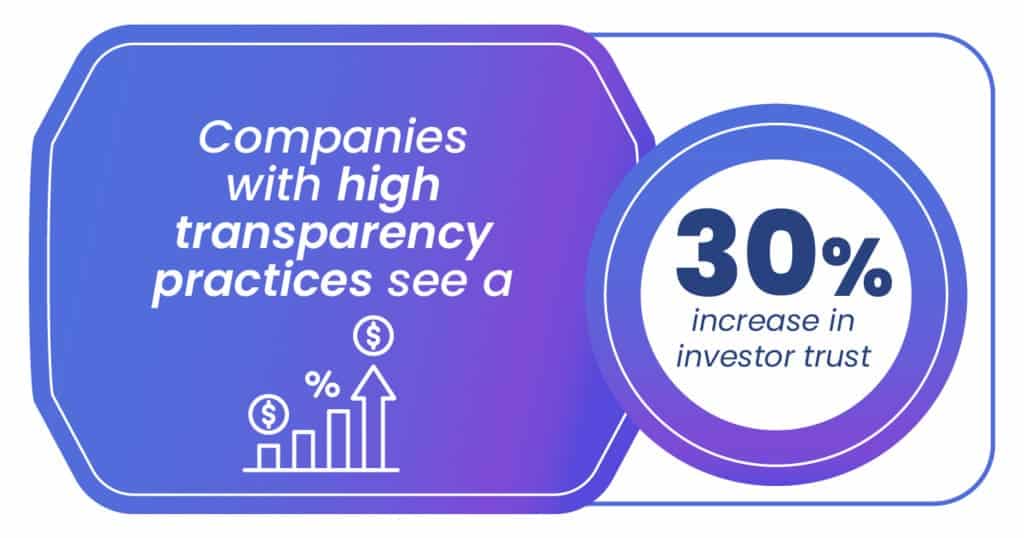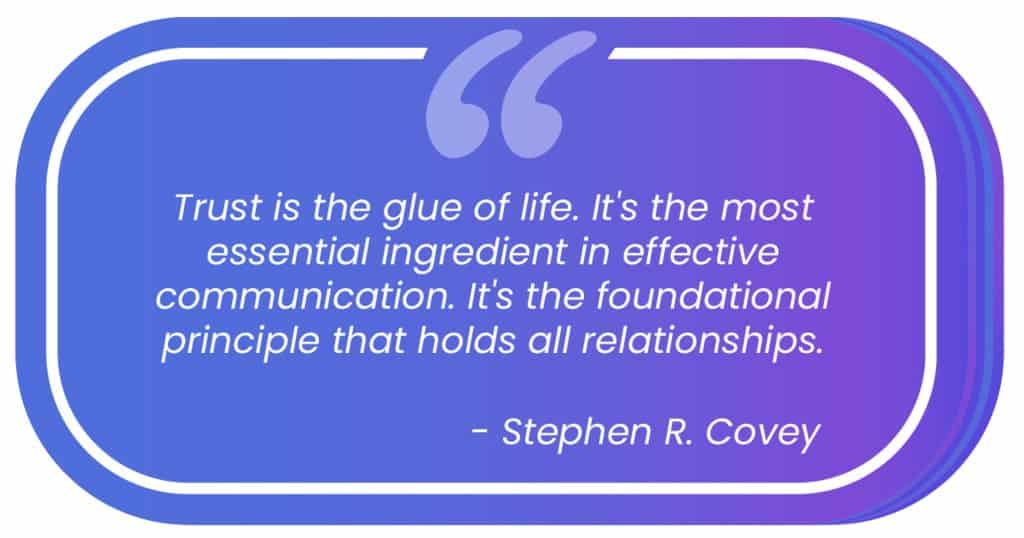Transparency builds a bridge of trust between investors and companies. When you, as an investor, have access to clear and accurate information, it demystifies the company’s operations and instills confidence. It involves disclosing financial statements, operational outcomes, and even potential risks.
Such openness allows you to make informed decisions rather than relying on speculation or incomplete data. Ultimately, this fosters a relationship grounded in mutual respect and understanding.
Open Lines: The Role of Communication in Investor Confidence

Communication isn’t merely about sending out regular updates; it’s about creating a two-way street where both parties feel heard and valued. Investors want to know more than just the numbers; they crave insights.
They want to understand your company’s vision, strategy, and the challenges you’re tackling. By being transparent and forthcoming about all aspects of the business, you build a solid foundation of trust.
Transparency Equals Trust
Imagine you’re an investor receiving quarterly reports that only highlight the positives. While it may seem beneficial to showcase successes, it can also raise doubts. Investors might wonder what’s being left out. When you share both the good and the bad, you prove you’re confident enough to handle scrutiny. This honesty encourages investors to believe in your leadership and strategy.
Engagement Through Openness
Openness invites engagement. When investors feel they can ask questions and receive straightforward answers, they become more involved and supportive. Regularly scheduled calls, investor meetings, and accessible communication channels offer opportunities for investors to connect directly with your team.
This interaction allows them to feel more integrated within the company’s journey, turning them from mere stakeholders into enthusiastic supporters.
Case in Point: Consider the global beverage company that faced a product recall. Instead of shying away, the firm’s leadership provided frequent updates about remedial actions, future prevention plans, and even allowed investors to ask pointed questions during a live Q&A session. Such transparency mitigated potential backlash and fostered greater investor loyalty.
Transparency In Action
It’s crucial to harness the right tools and strategies to build effective investor relations. Here, we delve into a few essential tactics that can help you establish and maintain investor trust.
Regular Updates: Investors appreciate being kept in the loop. Providing frequent updates on company performance, strategic initiatives, and market conditions can reassure investors of your commitment to transparency.
Quarterly Reports: Detailed, transparent quarterly reports offer a comprehensive snapshot of your company’s financial health. These reports should present both qualitative and quantitative data, providing a thorough understanding of what’s driving your company’s success.
Interactive Platforms: Utilize interactive platforms like webinars, virtual meetings, or live Q&A sessions. These platforms create opportunities for direct communication, allowing investors to pose questions and gain insights straight from the source.
Personalized Communication: Tailoring your communication efforts to the needs and concerns of different investor segments can make a considerable difference. This approach shows that you value their unique perspectives and are willing to address their specific inquiries.
Investor Briefings: Hosting periodic investor briefings can build a sense of community and loyalty. These sessions go beyond basic updates, delving into strategic visions, market positioning, and future growth prospects.
Reporting: Engage investors by providing detailed financial performance reports and forecasts. This process not only shows accountability but also sets realistic expectations. Make use of visual aids like charts and graphs to make complex data more digestible and relatable.
Bonus Tip
Open Q&A: Moreover, open Q&A sessions during these briefings can be incredibly beneficial. They offer a platform for investors to voice concerns and ask questions directly, fostering an environment of openness. Transparency in addressing these queries can significantly augment trust and demonstrate your commitment to addressing investor needs.
Including expert guest speakers or industry leaders can further enrich these sessions. Their insights add an additional layer of credibility and can provide a different perspective on market trends and business strategies. This multifaceted approach helps ensure that your briefings are not only informative but also engaging and valued by your investor community.
Navigating Difficult Conversations: Maintaining Trust During Challenging Times
When tough times hit, communication isn’t just important; it’s crucial. Investors want to know that they’re kept in the loop, especially when the waters get choppy. Start by being upfront about the issues at hand. Acknowledge the challenges directly—skirting around the problem only builds suspicion.
Next, maintain a consistent flow of information. Regular updates provide reassurance, making investors feel they’re part of the journey, not just passengers left in the dark. Share both the bad and the good news. Transparency fosters trust, and in times of difficulty, it’s trust that holds everything together.
Additionally, proactively address concerns. Invite questions and provide detailed, thoughtful responses. This two-way communication can turn potential frustration into understanding and collaboration. Remember, it’s not just about delivering information; it’s about engaging in a dialogue.
Finally, outline a clear plan for overcoming the difficulties. Highlight the strategies in place to mitigate risks and steer the course back to stability. Investors need to see that there is a roadmap and that you’re equipped to navigate through the storm. By doing so, you reinforce confidence and demonstrate leadership under pressure.
The Human Element: Building Personal Connections with Investors
At the heart of any successful business relationship is the ability to connect on a personal level. It’s not just about presenting the numbers or outlining strategic goals—it’s about understanding and addressing the concerns, aspirations, and values of your investors.
Personalized Communication: Take the time to tailor your communication efforts. Address investors by their names, acknowledge their individual contributions, and provide insights that are directly relevant to their interests. This level of personalization makes your investors feel valued and respected, which in turn fosters a deeper sense of loyalty and trust.
Face-to-Face Meetings: Whenever possible, opt for in-person meetings or video calls instead of emails and phone calls. Seeing each other face to face, even virtually, can significantly enhance the quality of your communication. These interactions offer an opportunity to build rapport, read body language, and convey sincerity.
Consider creating opportunities for informal interactions. Hosting events such as networking dinners or casual meetups can strengthen these personal connections. Investors who feel they know you on a personal level are more likely to trust you with their investments and support your vision.
Measuring Success: How to Gauge Investor Trust
To truly understand how much trust your investors place in you, it’s crucial to develop specific metrics and evaluation strategies. These tools will help you measure the effectiveness of your transparency and communication efforts. Let’s dive into some of the proven methods:
- Surveys and Feedback Forms: Regularly gathering feedback through surveys can offer invaluable insights. Ask investors about their satisfaction with your communication, the clarity of your reports, and their overall confidence in your leadership.
- Engagement Levels: Pay attention to how often and how deeply your investors engage with your communications. High open rates for emails, active participation in meetings, and frequent inquiries might indicate robust trust.
- Retention Rates: If your investors stick with you and choose to reinvest, it’s a strong indicator of their trust. Analyze patterns in investor behavior over time to spot trends and areas for improvement.
- Direct Communication: Sometimes, the most straightforward approach is direct communication. Having one-on-one conversations or exit interviews with investors can offer candid feedback.
By consistently applying these methods, you can fine-tune your approach and reinforce the trust you’ve worked hard to build. Remember, measuring success isn’t solely about the metrics—it’s about continuously adapting to meet your investors’ evolving needs and expectations.
Learn how you can improve your investor relations with secure file sharing.











